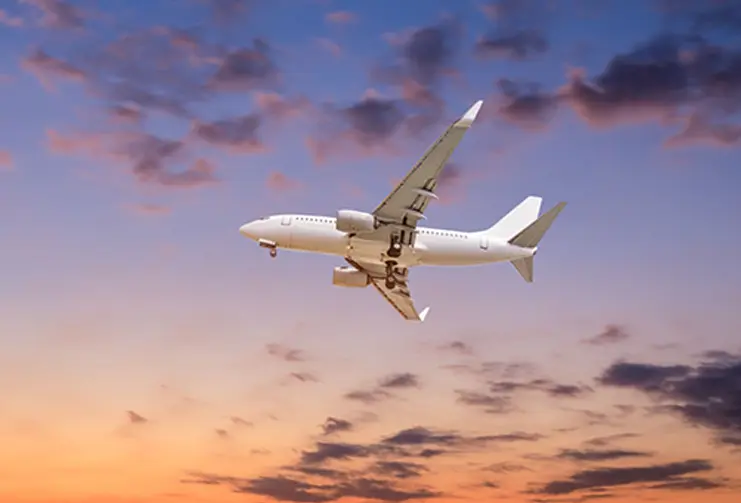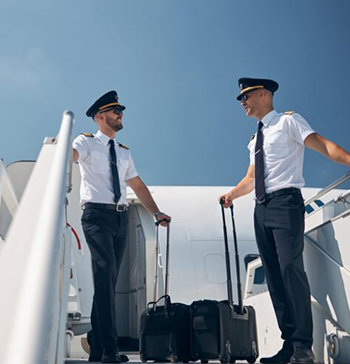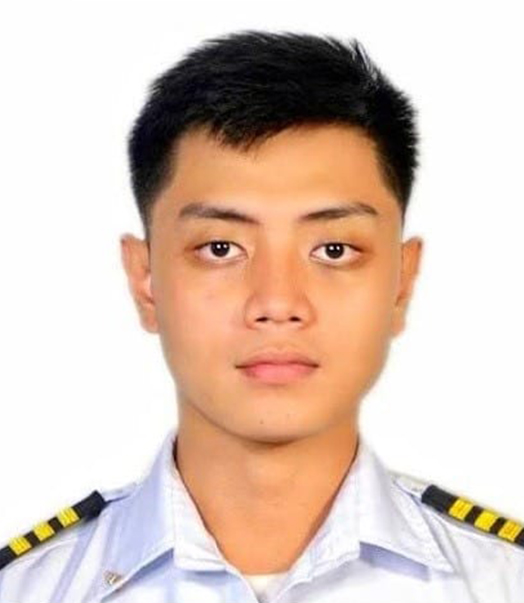
Investigating Accreditation and Safety: Crucial Steps in Choosing a Pilot Training School in the Philippines
Choosing the right pilot training school requires a comprehensive approach, focusing on various crucial aspects. Two of the most critical factors you should investigate are a school’s accreditation status and its safety record:
- Accreditation Status and CAAP Certification:
Accreditation is a stamp of approval from a recognized organization ensuring the school meets specific standards. In the Philippines, the Civil Aviation Authority of the Philippines (CAAP) is the governing body responsible for overseeing and regulating all aspects of civil aviation, including pilot training schools.
Want to find out more about our pilot courses?
Evaluating a school’s accreditation status involves:
- Verifying CAAP-Approved Training Organization (ATO) status: Ensure the school holds a valid and active ATO certificate issued by the CAAP. This signifies that the school meets the necessary training standards, curriculum requirements, and instructor qualifications established by the CAAP.
- Understanding additional accreditations: Some schools may hold additional accreditations from international organizations or associations related to aviation training. These can indicate a commitment to exceeding the minimum standards set by the CAAP and adhering to international best practices.
Why is CAAP accreditation important?
- Ensures adherence to safety regulations: CAAP accreditation guarantees that the school adheres to established safety regulations and industry best practices, minimizing risks and prioritizing student safety.
- Recognized training and certifications: Graduates from CAAP-approved schools receive globally recognized training and certifications, increasing their job prospects both domestically and internationally.
- Quality assurance and oversight: CAAP conducts regular audits and inspections of approved training organizations, ensuring they maintain their commitment to quality and safety standards.
- Investigating Safety Record and Reputation:
Beyond accreditation, a school’s safety record and its reputation for upholding high safety standards are crucial considerations. Here’s how to investigate these aspects:
- Reviewing accident and incident history: While accidents are extremely rare in well-maintained and well-managed training programs, understanding the school’s past accident and incident history is crucial. You can find relevant information through reliable aviation news sources or industry publications.
- Seeking feedback and reviews: Research online reviews and testimonials from current or former students about the school’s safety culture, instructor approach to safety, and overall focus on risk mitigation during training.
- Engaging in direct communication: Contact the school and directly inquire about their safety protocols, maintenance procedures, and emergency response plans. This demonstrates their openness and transparency towards safety practices.
- Aircraft Fleet and Maintenance: Examining the Tools for Your Flight Training
When choosing a pilot training school in the Philippines, scrutinize the aircraft they utilize for training. This is crucial, as the aircraft type directly impacts your learning experience and future career options.
Types of Aircraft:
Pilot training schools typically utilize single-engine aircraft for initial training. Popular options include:
- Cessna 152: This iconic two-seater aircraft is known for its reliability, fuel efficiency, and ease of handling, making it ideal for ab initio training.
- Diamond DA20: This modern two-seater offers advanced avionics and performance compared to traditional trainers, providing valuable exposure to modern technology.
- Piper Archer: Another popular two-seater trainer, the Piper Archer is known for its stability and forgiving flight characteristics, making it well-suited for beginner pilots.
As you progress through your training, schools may offer multi-engine or type-specific training on different aircraft models like:
- Beechcraft Baron: This versatile twin-engine aircraft is frequently used for multi-engine training, preparing pilots for commercial operations.
- Cessna 172: While primarily used for single-engine training, some schools might offer Cessna 172 SP or R models with retractable landing gear, exposing students to more advanced systems.
Assessing the Aircraft Fleet:
- Variety and Relevance: Ensure the school offers a range of aircraft types relevant to your chosen career path. If you aspire to fly commercially for a specific airline, consider whether they utilize similar aircraft types for pilot training.
- Maintenance and Safety Record: The condition of the aircraft is paramount. Investigate the school’s maintenance program, frequency of inspections, and overall safety record. Look for schools with a strong commitment to safety and a documented history of well-maintained aircraft.
- Technology Integration: Consider the level of technology incorporated into the aircraft. Modern aviation relies heavily on advanced avionics and navigation systems. Choose schools with aircraft featuring the latest technology to ensure your training reflects current industry standards.
Pilot Training Philippines Can Assist:
While not directly involved in aircraft maintenance, Pilot Training Philippines can guide you in understanding:
- Industry standards for aircraft maintenance: They can share resources and information on typical maintenance schedules and industry best practices.
- Evaluating online resources: They can help you research the specific aircraft models utilized by the schools you are considering and access reports or data regarding their maintenance records.
- Asking insightful questions during school visits: They can help you prepare questions about the school’s maintenance procedures, frequency of inspections, and any potential concerns you might have regarding the aircraft fleet.
- Exploring the Heart of Learning: Your Instructors and the Student-to-Instructor Ratio
The quality of your instructors and the student-to-instructor ratio are critical factors in determining your learning experience and flight training success.
Instructor Qualifications and Experience:
- Licenses and Certifications: Ensure your instructors hold valid Civil Aviation Authority of the Philippines (CAAP) flight instructor licenses and any additional endorsements relevant to the training they provide.
- Flight Experience: Look for instructors with extensive flying experience, not just as instructors but also in relevant fields like commercial aviation. Their practical knowledge and diverse experiences can significantly enhance your learning.
- Teaching Style and Communication: Choose instructors who demonstrate a passion for teaching, possess strong communication skills, and readily adapt their teaching style to cater to individual needs. Observe instructors during school visits to evaluate their instructional approach and rapport with students.
Student-to-Instructor Ratio:
A lower student-to-instructor ratio allows for more personalized attention, ensuring your questions are addressed promptly, and you receive sufficient feedback on your performance. Ideally, look for schools with a maximum ratio of 3:1 for ab initio training and potentially lower ratios for advanced or specialized courses.
Pilot Training Philippines Can Assist:
Pilot Training Philippines can help you by:
- Connecting with current or former students: Talking to individuals who have recently completed training at the schools you are considering can provide valuable insights into their experience with the instructors and the overall training environment.
- Developing effective communication skills: They can assist you in honing your communication and articulation skills, enabling you to confidently interact with your instructors, ask questions, and express your concerns or learning needs effectively.
- Building self-advocacy skills: They can equip you with strategies to advocate for your learning needs, ask clarifying questions, and ensure you receive the personalized attention you deserve from your instructors.
- Assessing the Training Curriculum: A Breakdown of Key Components
Comprehensive Curriculum:
A crucial factor when choosing a pilot training school is its curriculum. A well-structured curriculum should encompass all essential aspects of pilot training, ensuring you possess the necessary knowledge, skills, and experience to become a competent pilot.
Here’s what to look for:
- Ground school: This foundational training covers essential theoretical knowledge in aeronautical science, aerodynamics, meteorology, navigation, aircraft systems, flight regulations, and human factors. Look for a well-rounded curriculum that delves into these topics in detail, utilizing clear explanations, interactive learning practices, and comprehensive resources like textbooks, manuals, and online learning tools.
- Flight simulation: Flight simulators provide a realistic training environment for practicing flight procedures, instrument flying, emergency situations, and decision-making in a controlled setting before actual aircraft experience. Your chosen school should offer modern flight simulators equipped with various capabilities to replicate specific aircraft types and flight scenarios.
- Practical flight training: This real-world experience is where you apply the knowledge gained in ground school and flight simulation to actual flying under the guidance of a qualified instructor. Ensure the school offers a sufficient number of flight hours to meet the requirements for your desired license and provides opportunities to practice various maneuvers, navigate different environments, and gain confidence in your flying skills.
Pilot Training Philippines: Your Learning Partner:
While Pilot Training Philippines doesn’t directly provide pilot training, they can be your partner in understanding the curriculum:
- Helping you analyze the curriculum breakdown: They can assist you in interpreting the training program’s outline, ensuring it covers all essential aspects and aligns with your specific learning needs and goals.
- Connecting you with current students for insights: They can facilitate connections with current students to gain firsthand perspectives on the curriculum’s effectiveness and instructors’ teaching styles.
- Charting your Course: Matching Program Duration with Your Goals
Training Program Duration:
The duration of a pilot training program varies depending on the type of license you aim for, the training intensity, and the specific school’s structure. A typical Private Pilot License (PPL) program might last around 6 months to a year, while a Commercial Pilot License (CPL) program may take 12 to 18 months.
Factors to Consider:
- Schedule compatibility: Ensure the program duration aligns with your available time commitment and flexibility. Consider factors like existing work or personal commitments, and choose a program that allows you to manage your training schedule effectively.
- Financial implications: Program duration directly impacts the overall cost of your training. Be mindful of the financial commitment involved and choose a program that fits your budget and financial planning.
- Personal learning pace: Assess your learning style and pace. Some individuals may prefer a more intensive program, while others may benefit from a slower pace with more time for consolidation and practice. Choose a program that suits your learning style and ensures you have adequate time to grasp critical concepts and master essential skills.
Pilot Training Philippines: Your Planning Partner:
Pilot Training Philippines can assist you in:
- Developing a personalized timeline: They can help you create a realistic timeline for your pilot training journey, considering factors like program duration, scheduling requirements, and potential delays.
- Financial planning and resource management: They can offer guidance on financial planning strategies to manage the cost of your chosen program and explore potential funding options like scholarships or financial aid schemes.
- Time management strategies: They can provide support in developing time management skills to balance your training program with other commitments and ensure you can effectively manage your time and resources throughout the journey.
- Understanding the Total Cost of Your Pilot Training Journey: A Breakdown
The total cost of your pilot training journey in the Philippines can vary depending on several factors, including:
- Type of license: PPL training costs less than CPL and ATPL training due to fewer required flying hours.
- Chosen school: Different schools have varying fee structures for tuition, aircraft rental, hangar fees, and other charges.
- Training duration: The longer the program (based on required hours), the higher the overall cost.
- Living expenses: Accommodation, food, transportation, and other living costs will vary depending on your location and lifestyle.
Here’s a breakdown of the main cost categories:
- School fees:
- Tuition: This covers the academic portion of the training, including theoretical knowledge instruction and ground school courses.
- Flight training fees: These cover aircraft rental charges per flying hour, including fuel and instructor costs.
- Simulator fees: Simulator training, while not mandatory for all licenses, can incur additional fees depending on the school and simulator type.
- Medical examinations and certifications: Medical examinations and aviation medical certificates are mandatory and should be factored into the cost.
- Living expenses:
- Accommodation: Costs can vary significantly depending on your chosen location (city vs. rural area), preferred housing type (shared accommodation vs. individual apartment), and personal preferences.
- Food: Grocery expenses and dining out costs can vary based on your eating habits and budget.
- Transportation: Consider daily commute costs, potential car rentals, or transportation expenses related to training locations.
- Other expenses: Include costs like utilities, internet, communication, study materials, and personal needs.
Tips for estimating total cost:
- Contact schools directly: Request detailed fee structures for your desired program, including breakdowns for tuition, flight training fees, and potential simulator costs.
- Research accommodation options: Explore potential living arrangements and estimated costs in your chosen training location.
- Develop a realistic budget: Create a budget plan considering all anticipated expenses and factor in potential buffer space for unforeseen costs.
Pilot Training Philippines Can Assist:
While not offering pilot training, they can help with:
- Financial planning: Assisting you in creating a comprehensive budget, anticipating all potential costs, and identifying areas for potential cost reduction.
- Exploring financial aid options: Connecting you with relevant scholarship opportunities, financial aid programs offered by schools, or alternative funding options like loans, if applicable.
- Negotiation tips: Providing basic guidance on communication and negotiation strategies when discussing fees with potential training schools.
Remember, thorough research and realistic budgeting are key to navigating the financial aspects of your pilot training journey.
- Navigating Additional Resources and Support: What Schools Offer Beyond Training
Many pilot training schools in the Philippines offer additional resources and support services beyond core training programs, aiming to equip students with various tools for success. Here are some examples:
- Career guidance and placement assistance:
- Some schools have dedicated career counselors who offer guidance on resume writing, interview preparation, and navigating the job market.
- They may maintain partnerships with airlines or aviation companies, facilitating direct placement opportunities or internship programs for students.
- They might organize job fairs or career workshops connecting students with potential employers within the aviation industry.
- Financial aid and scholarship options:
- Several schools offer merit-based scholarships or financial aid packages for outstanding students, reducing the financial burden of training.
- They may assist students in identifying external scholarship opportunities offered by government agencies, private organizations, or aviation-related associations.
- These resources can help make pilot training more accessible to individuals with diverse financial backgrounds.
- Student support services:
- Schools may provide academic support services like tutoring or personalized guidance for struggling students.
- They might offer facilities like libraries, computer labs, or study areas conducive to studying and completing assignments.
- Counseling services might be available to address mental health concerns or personal challenges impacting student well-being.
- Alumni networks and mentorship opportunities:
- Many schools have established alumni networks connecting current students with former graduates.
- These networks offer opportunities to learn from experienced pilots, seek career advice, and build valuable connections within the aviation industry.
- Some schools may facilitate mentorship programs where students can connect with experienced pilots for personalized guidance and support.
Pilot Training Philippines Can Assist:
While not directly involved in running pilot training schools, they can support you by:
- Connecting you with schools: They might have connections or partnerships with reputable training schools known for providing comprehensive support services beyond core training.
- Identifying additional resources: They can help you research scholarship opportunities, career resources, or independent mentorship programs outside of your chosen training school.
- Developing life skills and navigating challenges: They can provide support in areas like time management, communication skills,
- What is the success rate of graduates from the school in obtaining pilot licenses and securing employment in the aviation industry?
While some schools advertise their graduate success rates, approaching these figures with caution is crucial. Success rates can be misleading and should not be the sole evaluation criterion. Here’s why:
Challenges in Interpreting Success Rates:
- Defining Success: Different schools may define “success” differently. Some might only consider immediate license acquisition, while others might factor in long-term career placement.
- Data Accuracy and Verification: Independently verifying the accuracy of success rate claims presented by schools can be challenging.
- External Factors: Graduation success and career placement can be impacted by individual student effort, market conditions, and economic factors not directly controlled by the school.
A More Holistic Approach:
Instead of relying solely on advertised success rates, consider a more holistic approach when evaluating pilot training schools:
- License Acquisition Rates: While not definitive, inquire about the average time it takes students at the school to obtain their desired licenses.
- Employment Assistance Programs: Ask about the school’s career services or partnerships with airlines that might assist graduates in finding job opportunities.
- Industry Reputation and Alumni Network: Research the school’s reputation within the industry and connect with alumni through online forums or professional networks to gain firsthand insights about their career progression after graduating.
Pilot Training Philippines Can Assist:
While not offering pilot training directly, Pilot Training Philippines can assist you with:
- Understanding factors beyond success rates: They can help you understand the limitations of relying solely on success rates and guide you towards a more holistic evaluation of schools.
- Gathering information from diverse sources: They can assist you in gathering information about student experiences, alumni success stories, and the school’s industry reputation through various channels.
- Developing a personalized evaluation framework: By understanding your individual aspirations and career goals, they can help you develop a framework for evaluating potential training schools beyond advertised success rates.
Remember, success in pursuing a pilot career is a culmination of your dedication, passion, and the quality of training you receive. By adopting a broader perspective and seeking support, you can make informed decisions about your training journey.
Free Career Guide

Want to find out more about our pilot courses?
Download our free eBook to learn all about pilot training in the Philippines, including the qualifications needed, the training process, available courses, and career opportunities. Find out how you can take the first step toward a rewarding career in aviation.
Download Pilot Course Information Guide
Our Pilot Training Courses
Take flight with our comprehensive Pilot Training Courses, designed to elevate your aviation career







